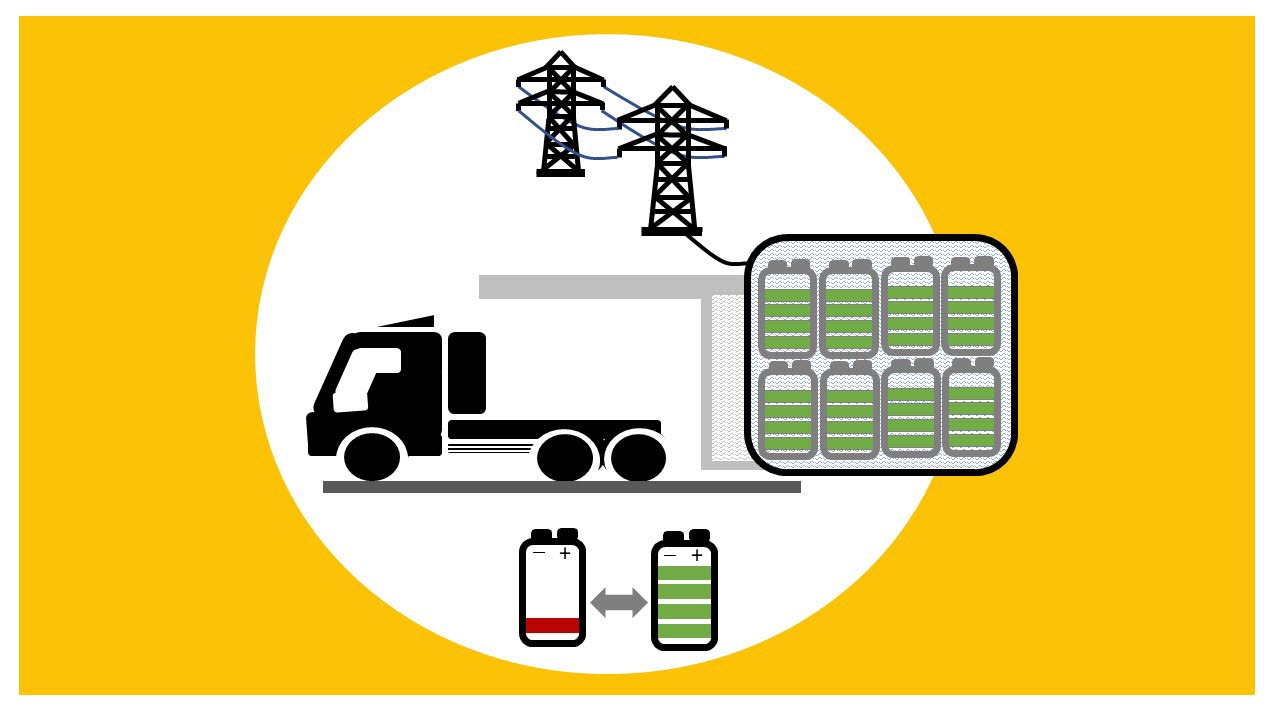Report is advocating pilot tests of battery swapping for heavy vehicles

Battery swapping systems for heavy vehicles add important advantages in addition to other ways of electrifying the transport system. The government should therefore start a pilot project to enable an expanded system for battery swapping in Sweden as well. This is the recommendation in a new report from VTI.
Battery swapping for heavy vehicles has important advantages in that a fully charged battery is made available in just a few minutes, this involves reduced investments for hauliers (when the battery is leased) and, compared to cable charging, less impact on the local power grid. An extensive rollout in China shows that the technology works well and can be commercially viable. In addition, the life cycles of vehicles and batteries are separated, which opens up new business opportunities for battery owners.
There are, at the same time, significant challenges. Swedish and European vehicle manufacturers have so far been sceptical, and the regulations and standards that exist today do not cover battery swaps.
In the report “Battery-Swapping for Heavy Duty Vehicles” Researchers and experts at VTI, Linköping University, Halmstad University, Logistikia and Intuizio examine the conditions for expanding battery swapping systems in Sweden. The report notes that battery swapping adds “significant advantages” when combined with other charging solutions, in several ways, and that strategic planning and development can make battery swapping an important complement to other solutions.
The report therefore recommends that the government start a pilot project to assess the viability of a future battery-swapping system in Sweden. The government should also communicate the system’s potential to other EU countries and work to ensure that the regulations are adapted to allow battery swaps for freight transport. The Swedish Energy Agency should work to include battery swaps under AFIR (Alternative Fuels Infrastructure Regulation) for the expansion of alternative fuels within the EU. “No one makes money on a stationary vehicle. With battery swapping, logistics companies can continue their day-to-day operations much as they do today. This is an important advantage,” says Arne Nåbo, Research Director at VTI.
“The batteries can also be used to support the electricity system as a whole. Unfortunately, in Sweden, we usually see the battery as part of the vehicle and not as a resource belonging to the energy system. It’s a mental leap we need to make.”
The report also suggests that the Swedish Energy Agency should be tasked with developing a model of how a battery-swapping system would affect the transport and energy systems. This kind of modelling would increase knowledge and contribute to better communication between companies and between companies and decision-makers.
“We’re not saying that battery swapping should replace charging via cable, but we are saying that it can be an important complement. We also want the Swedish industry to be part of that journey. There is still a possibility, but further down the line there is a risk that companies from other countries will dominate,” says Arne Nåbo.
The report also addresses the need for knowledge and the training of people at battery swapping stations, as well as the importance of social sustainability in the electrification of heavy goods traffic.
Text: Mikael Sönne
Translation: CBG
The report: Battery-Swapping for Heavy Duty Vehicles: A Feasibility Study on Up-Scaling in Sweden External link.
External link.
Don't miss out on VTI's news – subscribe now!
Stay informed with the latest research and news from VTI. Sign up for newsletters, sent by e-mail four times a year.
Contact
-
Magnus Eek
Research Director
magnus.eek@vti.se -
Svetla Chakarova-Käck
Senior Researcher
svetla.kack@vti.se
